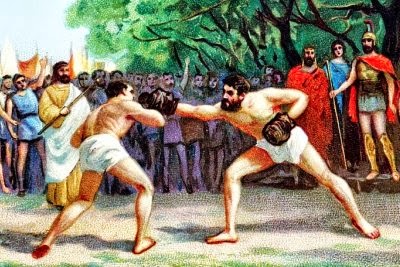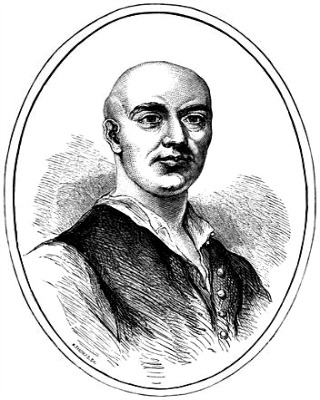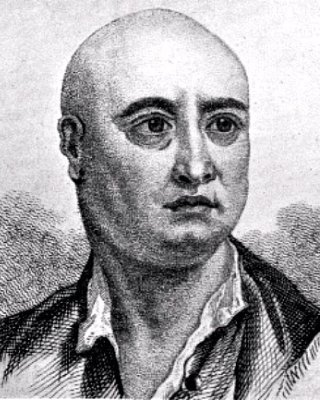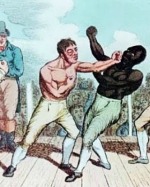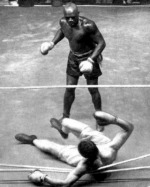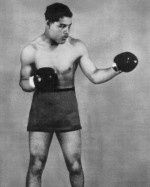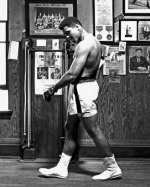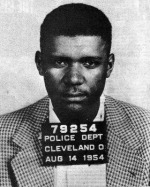Boxing in the Ancient World
Talk the Talk
In ancient Roman boxing, a circle would be marked out within an arena for gladiators to take part in their form of the sport, known as pugilatus.
This practice was continued when boxing was revived in the 17th century in Britain which gives us the term boxing ring.
This practice was continued when boxing was revived in the 17th century in Britain which gives us the term boxing ring.
Walk the Walk
In ancient Greek boxing, there were no weight classes and opponents were not always evenly matched as they tended to be chosen at random.
This would have made for very brutal contests, especially as the bouts were often done with leather straps on the hands of the fighters rather than cushioned boxing gloves like today.
This brutality must have taken its toll on some of the looks of the boxers, which was made fun of by Plato when he referred to them in The Gorgias as “the folk with the battered ears”.
This would have made for very brutal contests, especially as the bouts were often done with leather straps on the hands of the fighters rather than cushioned boxing gloves like today.
This brutality must have taken its toll on some of the looks of the boxers, which was made fun of by Plato when he referred to them in The Gorgias as “the folk with the battered ears”.
Boxing Quote
"I can entertain the proposition that life is a metaphor for boxing.
For one of those bouts that go on and on, round following round, jabs, missed punches, clinches, nothing determined, again the bell and again and you and your opponent so evenly matched.
It’s impossible not to see that your opponent is you...Life is like boxing in many unsettling respects. But boxing is only like boxing".
~ Joyce Carol Oates ~
For one of those bouts that go on and on, round following round, jabs, missed punches, clinches, nothing determined, again the bell and again and you and your opponent so evenly matched.
It’s impossible not to see that your opponent is you...Life is like boxing in many unsettling respects. But boxing is only like boxing".
~ Joyce Carol Oates ~
 The art of boxing, whereby two people enter a contest to see who can withstand the most punches from the other, dates back at least as far as the earliest civilisations and is probably one of the oldest sports of its kind in the history of fighting. Due to its simplicity, it can be speculated that even in the pre-civilized world, men would enter into such contests and over time it developed into a sport, with rudimentary rules and the use of equipment.
The art of boxing, whereby two people enter a contest to see who can withstand the most punches from the other, dates back at least as far as the earliest civilisations and is probably one of the oldest sports of its kind in the history of fighting. Due to its simplicity, it can be speculated that even in the pre-civilized world, men would enter into such contests and over time it developed into a sport, with rudimentary rules and the use of equipment.Ancient Boxing in the Earliest Civilisations
The earliest physical evidence portraying ancient boxing comes from the first known civilisation, Samaria (modern-day Iraq) where it is depicted on a number of carvings that are believed to have been produced in the third century BCE.Some equipment seems to already be in use at this time and while the fighters are bare-fisted, they do have straps around their wrists that would have provided them with some support and protection for the small bones in the wrists and hands.
Bare knuckled boxing was also the norm in Egypt, as depicted on a sculpture from around 1350 BCE from Thebes (modern-day Luxor). It shows spectators watching three sets of fighters and what is interesting is that they seem to be performing for the pharaoh. The earliest representation of ancient boxing gloves in use comes from a Minoan fresco (pictured above) from Thera (modern-day Santorini) which is commonly known as the Boxing Boys and dates from around 1600 BCE.
Bare knuckled boxing was also the norm in Egypt, as depicted on a sculpture from around 1350 BCE from Thebes (modern-day Luxor). It shows spectators watching three sets of fighters and what is interesting is that they seem to be performing for the pharaoh. The earliest representation of ancient boxing gloves in use comes from a Minoan fresco (pictured above) from Thera (modern-day Santorini) which is commonly known as the Boxing Boys and dates from around 1600 BCE.
A vase from the same region depicts what seems to be fighters wearing helmets as well as boxing gloves and it is believed that they may well have been used extensively at that time. There is some academic dispute on the purpose of ancient boxing gloves. While some scholars believe they were probably used as safety equipment for training purposes, others maintain that their shape may suggest that their purpose was to cause more damage to the opponent rather than to act as cushioning for the bones in the hand of the one doing the punching.
The object of pyx was to either knock out the opponent or force him to submit, which was indicated with a raised index finger. The fight would continue until a submission or knockout was achieved; in this particularly vicious version of ancient boxing, there were no rounds and participants could keep punching even if their opponent was knocked to the floor.
A soft dirt pit known as a skamma was used to fight in and a referee oversaw the bout, carrying a switch to whip any fighter that broke the rules or stepped out of line. While these contests were brutal affairs, a fighter would still need high levels of training, skill and courage to make it as an ancient Greek boxer. Pyx seems to have been akin to modern boxing though in place of boxing gloves, their wrists and knuckles would often be wrapped in straps known as himantes, which were made from ox hide and were designed to protect the boxer’s hands.
Ancient Greek Boxing
The god of boxing in ancient Greece was Apollo, (who was also the god of archery among other things), who was said to practice a form of the sport known as pyx (with clenched fist). Pyx was introduced to the ancient Olympic Games in 688 BCE where opponents were only allowed to punch. Other forms of attack such as grappling, biting and gouging were prohibited though it is hotly debated if kicking was allowed in ancient Greek boxing.The object of pyx was to either knock out the opponent or force him to submit, which was indicated with a raised index finger. The fight would continue until a submission or knockout was achieved; in this particularly vicious version of ancient boxing, there were no rounds and participants could keep punching even if their opponent was knocked to the floor.
A soft dirt pit known as a skamma was used to fight in and a referee oversaw the bout, carrying a switch to whip any fighter that broke the rules or stepped out of line. While these contests were brutal affairs, a fighter would still need high levels of training, skill and courage to make it as an ancient Greek boxer. Pyx seems to have been akin to modern boxing though in place of boxing gloves, their wrists and knuckles would often be wrapped in straps known as himantes, which were made from ox hide and were designed to protect the boxer’s hands.
Cleomedes of Astypalaea was a boxing legend and a famous Greek athlete from the fifth century BCE. While competing in a boxing event at an ancient Olympic Games, he killed his opponent and was disqualified. Feeling hard done by, Cleomedes went into a rage and pulled down a pillar that supported the roof of a school killing sixty children.
Soon, an angry mob chased him but somehow he managed to disappear. Not knowing what to do, they sent an envoy to Delphi where the Pythian priestess told them that the man who had murdered their children was no longer mortal. From then on, the people of Astypalaeans honoured Cleomedes as a hero, offering up sacrifices to him and praising him as a demi-god.
After the fourth century BCE
the himantes were replaced with so-called sharp thongs that served the same purpose and consisted of a thick strip of leather. Different fighters seemed to use these straps in different ways, some
covering much of the hands while others just used them as support for the wrist.
While they were probably used mainly for protecting the boxer’s hand, when covering the knuckle, the leather would also cut into an opponent when he was hit causing far more damage than if they were hit by a fighter using the himantes, sometimes also called softer thongs. It is interesting to note that as with most sporting contests in the ancient Olympic Games, boxers would be completely naked (apart from the hand/wrist covering they wore).
In many ways, the caestus was more like a knife than an ancient boxing glove as it could actually stab and rupture a fighter. In his poem The Aeneid, Virgil references their brutal nature by mentioning that when a Sicilian fighter called Entellus wanted to wear a pair previously worn by his brother, they were still “Stained with blood and splattered brains.”
These metal-laden boxing gloves were not necessarily compulsory however as can be seen from the same poem when Entellus’ opponent, Dares of Troy, refused to fight in them opting instead for lighter, padded gloves (depicted in the image below). Unsurprisingly, ancient Roman boxing matches often ended in the death of the loser and while many fighters were willing contestants, they were also fought between unwilling participants such as slaves. As well as being a sport and a gladiatorial contest, it was also seen as a training method for soldiers in the Roman army, though safety equipment would have been used in this case to prevent injury during training.
Boxing held an important role in Roman culture until, in around 400 CE, Emperor Theodoric the Great banned it outright. As a Christian, he disapproved of the deaths and disfigurements it could cause, and of its use as a form of violent entertainment. After this, the sport fell out of favour across Europe until it was revived and popularised in Britain from the seventeenth century in the form of bare knuckle boxing.



Holland, G. [Internet]. 2008. History of London Boxing. The BBC. Available from: http://www.bbc.co.uk/london/content/articles/2007/11/13/early_boxing_history_feature.shtml [Accessed May 20, 2013].
Murray, S.R. [Internet]. 2010. Boxing Gloves of the Ancient World. Electronic Journals of Martial Arts and Sciences. Available from: http://ejmas.com/jcs/2010jcs/jcsart_murray_1007.html [Accessed May 20, 2013].
Poliakoff, M. [Internet]. 2013. Boxing. Britannica. Available from: http://www.britannica.com/EBchecked/topic/76377/boxing [Accessed May 20, 2013].
The Ancient Olympics: Bridging past and present. [Internet]. 2013. The Open University. Available from: http://www.open.edu/openlearn/body-mind/health/sport-and-fitness/the-ancient-olympics-bridging-past-and-present/content-section-8.2 [Accessed May 20, 2013].
The World of Boxing. [Internet]. 2013. Suffolk University. Available from: http://inceptor.mcs.suffolk.edu/~cruz/project/boxing2.html [Accessed May 20, 2013].
While they were probably used mainly for protecting the boxer’s hand, when covering the knuckle, the leather would also cut into an opponent when he was hit causing far more damage than if they were hit by a fighter using the himantes, sometimes also called softer thongs. It is interesting to note that as with most sporting contests in the ancient Olympic Games, boxers would be completely naked (apart from the hand/wrist covering they wore).
Ancient Roman Boxing
Boxing in ancient Rome was known as pugilatus (from which we derive the modern word pugilism) and was even more ruthless than ancient Greek boxing. The leather straps around the hands could be utilised but were often replaced by what were effectively leather knuckledusters known as caestus that had metal inserted into them to cause maximum damage to an opponent.In many ways, the caestus was more like a knife than an ancient boxing glove as it could actually stab and rupture a fighter. In his poem The Aeneid, Virgil references their brutal nature by mentioning that when a Sicilian fighter called Entellus wanted to wear a pair previously worn by his brother, they were still “Stained with blood and splattered brains.”
These metal-laden boxing gloves were not necessarily compulsory however as can be seen from the same poem when Entellus’ opponent, Dares of Troy, refused to fight in them opting instead for lighter, padded gloves (depicted in the image below). Unsurprisingly, ancient Roman boxing matches often ended in the death of the loser and while many fighters were willing contestants, they were also fought between unwilling participants such as slaves. As well as being a sport and a gladiatorial contest, it was also seen as a training method for soldiers in the Roman army, though safety equipment would have been used in this case to prevent injury during training.
Boxing held an important role in Roman culture until, in around 400 CE, Emperor Theodoric the Great banned it outright. As a Christian, he disapproved of the deaths and disfigurements it could cause, and of its use as a form of violent entertainment. After this, the sport fell out of favour across Europe until it was revived and popularised in Britain from the seventeenth century in the form of bare knuckle boxing.
Written by Andrew Griffiths – Last updated 12/06/2023. If you like
what you see, consider following the History of Fighting on social media.
Find Us On:



Further Reading:
Ancient Olympic Events. [Internet]. 2013. Tufts University. Available from: http://www.perseus.tufts.edu/Olympics/boxing.html [Accessed May 20, 2013].Holland, G. [Internet]. 2008. History of London Boxing. The BBC. Available from: http://www.bbc.co.uk/london/content/articles/2007/11/13/early_boxing_history_feature.shtml [Accessed May 20, 2013].
Murray, S.R. [Internet]. 2010. Boxing Gloves of the Ancient World. Electronic Journals of Martial Arts and Sciences. Available from: http://ejmas.com/jcs/2010jcs/jcsart_murray_1007.html [Accessed May 20, 2013].
Poliakoff, M. [Internet]. 2013. Boxing. Britannica. Available from: http://www.britannica.com/EBchecked/topic/76377/boxing [Accessed May 20, 2013].
The Ancient Olympics: Bridging past and present. [Internet]. 2013. The Open University. Available from: http://www.open.edu/openlearn/body-mind/health/sport-and-fitness/the-ancient-olympics-bridging-past-and-present/content-section-8.2 [Accessed May 20, 2013].
The World of Boxing. [Internet]. 2013. Suffolk University. Available from: http://inceptor.mcs.suffolk.edu/~cruz/project/boxing2.html [Accessed May 20, 2013].
More Boxing History
Boxing History Home
The history of boxing dates back in one form or another as far as civilisation itself with ancient Greek boxing even being a part of the early Olympic Games. Modern boxing rules have made the sport safer for the fighters and more entertaining for the crowds, resulting in pugilism becoming one of the most popular athletics events on the planet today.
The history of boxing dates back in one form or another as far as civilisation itself with ancient Greek boxing even being a part of the early Olympic Games. Modern boxing rules have made the sport safer for the fighters and more entertaining for the crowds, resulting in pugilism becoming one of the most popular athletics events on the planet today.
Boxing in the 18th Century
Modern boxing history really began to develop into the sport known and loved today in the 18th century. Bare knuckled boxing contests began to be regulated and safety measures also began to be put in place. However, the period was also marred by controversy as it saw the first instances of corruption in the form of prize fighters taking payoffs and intentionally losing fights.
Modern boxing history really began to develop into the sport known and loved today in the 18th century. Bare knuckled boxing contests began to be regulated and safety measures also began to be put in place. However, the period was also marred by controversy as it saw the first instances of corruption in the form of prize fighters taking payoffs and intentionally losing fights.
Boxing in the 19th Century
This list of bare-knuckle boxers from the 19th century charts those who are generally accept as being World Champions. It includes some of the best fighters from this period in boxing history starting with Jem Belcher, the first champ of the new century and concluding with Jem Mace, who made the switch from bare-knuckle boxing to using boxing gloves after the introduction of the Queensbury Rules.
This list of bare-knuckle boxers from the 19th century charts those who are generally accept as being World Champions. It includes some of the best fighters from this period in boxing history starting with Jem Belcher, the first champ of the new century and concluding with Jem Mace, who made the switch from bare-knuckle boxing to using boxing gloves after the introduction of the Queensbury Rules.
Post-Queensbury Rules Boxing Culture
With the introduction of the Queensbury Rules in 1867, boxing culture was dramatically changed. The safety of the boxers was much improved though bare-knuckle boxing was still popular and as brutal as ever. For black boxers however, things actually changed for the worse as it became increasingly difficult for many of them to reach their full potential as a result of institutional racism.
With the introduction of the Queensbury Rules in 1867, boxing culture was dramatically changed. The safety of the boxers was much improved though bare-knuckle boxing was still popular and as brutal as ever. For black boxers however, things actually changed for the worse as it became increasingly difficult for many of them to reach their full potential as a result of institutional racism.
Sam Langford
Sam Langford, aka the Boston Tar Baby, was one of the greatest boxers never to be crowned world champion. Fighting in the early half of the twentieth century, he was a victim of the colour line in boxing and was not afforded a chance at the title because of the colour of his skin despite the fact that the champion at the time, Jack Johnson, was an African American.
Sam Langford, aka the Boston Tar Baby, was one of the greatest boxers never to be crowned world champion. Fighting in the early half of the twentieth century, he was a victim of the colour line in boxing and was not afforded a chance at the title because of the colour of his skin despite the fact that the champion at the time, Jack Johnson, was an African American.
Joe Louis
Joe Louis (The Brown Bomber) was an American boxer and widely considered to be one of the greatest world heavyweight champions of all time. He became an American hero when he defeated the German Max Schmeling, then later through his work promoting the war effort. Despite his considerable success, later in his career he would face massive debts due to unfair treatment by the taxman.
Little Known Facts About Muhammad Ali
Muhammad Ali was a three-time heavyweight boxing champion and is widely regarded as the greatest boxer of all time, as well as one of the most influential sportsmen of the 20th century. This selection of little-known facts about ‘the Louisville Lip’ show he led an interesting and varied life, both inside and outside the ring.
Muhammad Ali was a three-time heavyweight boxing champion and is widely regarded as the greatest boxer of all time, as well as one of the most influential sportsmen of the 20th century. This selection of little-known facts about ‘the Louisville Lip’ show he led an interesting and varied life, both inside and outside the ring.
The Reign of Don King
Don King is an influential American boxing promoter who has staged some of the biggest fights in boxing history, increased the prize money earned by fighters and considerably raised public interest in the sport, all in his own charismatic and outspoken style. Despite this, King’s career has been constantly marred by controversy leading to him being both loved and hated in the world of boxing.
Don King is an influential American boxing promoter who has staged some of the biggest fights in boxing history, increased the prize money earned by fighters and considerably raised public interest in the sport, all in his own charismatic and outspoken style. Despite this, King’s career has been constantly marred by controversy leading to him being both loved and hated in the world of boxing.
The images on this site are believed to be in the public domain, however, if any mistakes have been made and your copyright or intellectual rights have been breeched, please contact andrew@articlesonhistory.com.

